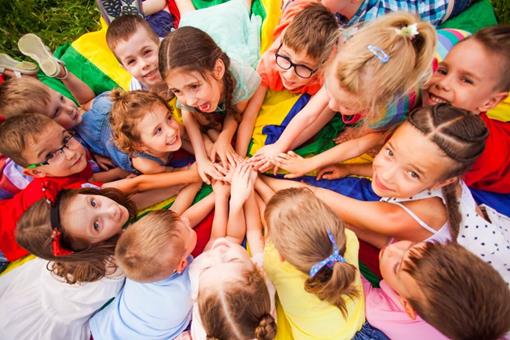Let’s Connect: health and wellbeing through alternative school sports

Let’s Connect: health and wellbeing through alternative school sports
February marks Children’s Mental Health Week which charity, Place2Be, launched in 2015 with the aim of shining a spotlight on the importance of positive mental health for both children and young people.
The theme for 2023 is ‘Let’s Connect’ which resonates with the team at Davies Sports. Taking part in sports and physical activity counteracts feelings of isolation and depression, and we’re advocating the government’s guidelines of 60 minutes of movement per day to help negate the negative impact caused by the Covid-19 pandemic, and encourage children to run, jump, play and interact with one another again.
So how do you instil a lifelong love of activity into children? Place2Be is using ‘Let’s Connect’ as a vehicle for creating positive, social connections, with ideas on different activities that build community and make young people think about how they socialise at home and at school.
Connecting through team sports can be very rewarding, but for some children the prospect of participating in traditional sports such as football and netball can fill them with dread. That’s why the team at Davies Sports has sourced a range of alternative sports and activities that children can participate in which are inclusive for all.
1. Dodgeball
Dodgeball is becoming increasingly popular in primary schools because it’s fun to play and doesn’t require great technical skill when starting out. If children like to run and throw balls, then most will enjoy this alternative game.
How to play
- Split your class into two teams of six and assign coloured bibs to each
- Allocate a bench for each team on the sidelines, and sit them in a line
- Place three balls on the centre line and blow the whistle
- Players from each team must grab a ball as quickly as possible
- All players must remain within their side of the court
- The aim is to throw the ball below the waist of the opposing player
- If a player is hit, they’re out
- If a player catches the ball, the thrower is out
2. Kin-Ball
This is a fairly new alternative but a game growing in popularity.
Using a giant, inflatable ball, primary school children can coordinate their moves and participate in the game easily, making it inclusive for all levels and abilities. The game can be played both indoors and outdoors making it suitable for all seasons.
The principles
- Create three mixed teams of four players, each wearing a team colour
- There are three periods of play, each lasting seven minutes for younger children
- When a colour is called, any one of that team must catch the ball with any part of their body before it touches the ground and then hit it onto another team
- Play continues like this until one of the teams doesn’t touch the ball before it hits the ground
- Points are awarded to the opposing sides when the ball is dropped in play
- The team with the most points at the end of the three periods is the winner
3. Sitting Volleyball
Adapted from the indoor version of the game, this is played on a smaller court with a lower net and is ideal for players of all abilities making it extremely inclusive. It doesn’t require leg speed making it a good alternative sport.
Basic rules
- Create two teams consisting of up to six players each, including a defence player who wears a different coloured bib
- Each team can pass to their own team three times before the ball has to land over the net
- Each player must keep their pelvis in contact with the floor whilst playing
- A point is scored when the ball lands in the opposition’s half of the court without being returned
- The first team to 25 points wins, however the win must be two points clear










